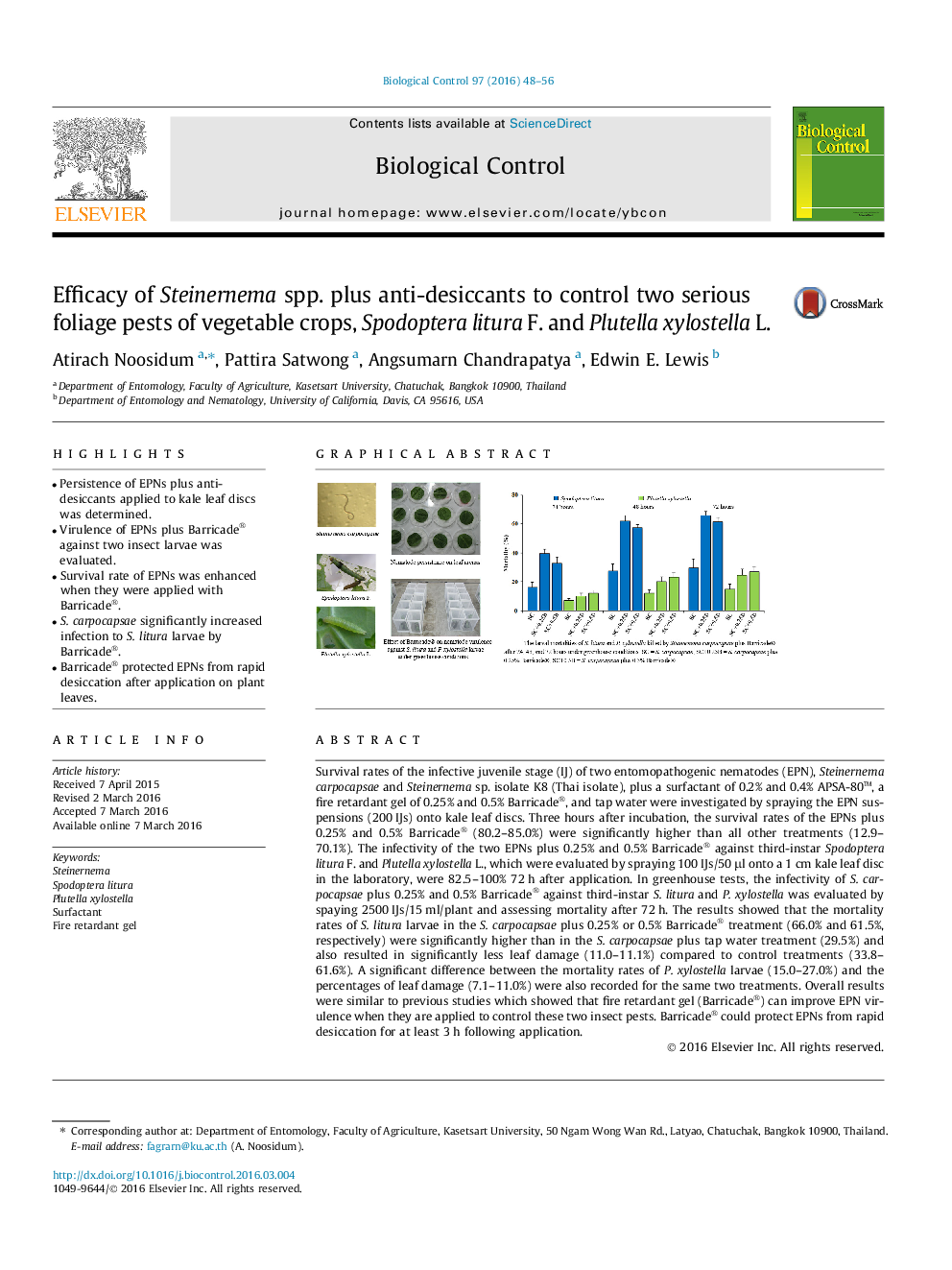| Article ID | Journal | Published Year | Pages | File Type |
|---|---|---|---|---|
| 4503685 | Biological Control | 2016 | 9 Pages |
•Persistence of EPNs plus anti-desiccants applied to kale leaf discs was determined.•Virulence of EPNs plus Barricade® against two insect larvae was evaluated.•Survival rate of EPNs was enhanced when they were applied with Barricade®.•S. carpocapsae significantly increased infection to S. litura larvae by Barricade®.•Barricade® protected EPNs from rapid desiccation after application on plant leaves.
Survival rates of the infective juvenile stage (IJ) of two entomopathogenic nematodes (EPN), Steinernema carpocapsae and Steinernema sp. isolate K8 (Thai isolate), plus a surfactant of 0.2% and 0.4% APSA-80™, a fire retardant gel of 0.25% and 0.5% Barricade®, and tap water were investigated by spraying the EPN suspensions (200 IJs) onto kale leaf discs. Three hours after incubation, the survival rates of the EPNs plus 0.25% and 0.5% Barricade® (80.2–85.0%) were significantly higher than all other treatments (12.9–70.1%). The infectivity of the two EPNs plus 0.25% and 0.5% Barricade® against third-instar Spodoptera litura F. and Plutella xylostella L., which were evaluated by spraying 100 IJs/50 μl onto a 1 cm kale leaf disc in the laboratory, were 82.5–100% 72 h after application. In greenhouse tests, the infectivity of S. carpocapsae plus 0.25% and 0.5% Barricade® against third-instar S. litura and P. xylostella was evaluated by spaying 2500 IJs/15 ml/plant and assessing mortality after 72 h. The results showed that the mortality rates of S. litura larvae in the S. carpocapsae plus 0.25% or 0.5% Barricade® treatment (66.0% and 61.5%, respectively) were significantly higher than in the S. carpocapsae plus tap water treatment (29.5%) and also resulted in significantly less leaf damage (11.0–11.1%) compared to control treatments (33.8–61.6%). A significant difference between the mortality rates of P. xylostella larvae (15.0–27.0%) and the percentages of leaf damage (7.1–11.0%) were also recorded for the same two treatments. Overall results were similar to previous studies which showed that fire retardant gel (Barricade®) can improve EPN virulence when they are applied to control these two insect pests. Barricade® could protect EPNs from rapid desiccation for at least 3 h following application.
Graphical abstractFigure optionsDownload full-size imageDownload as PowerPoint slide
